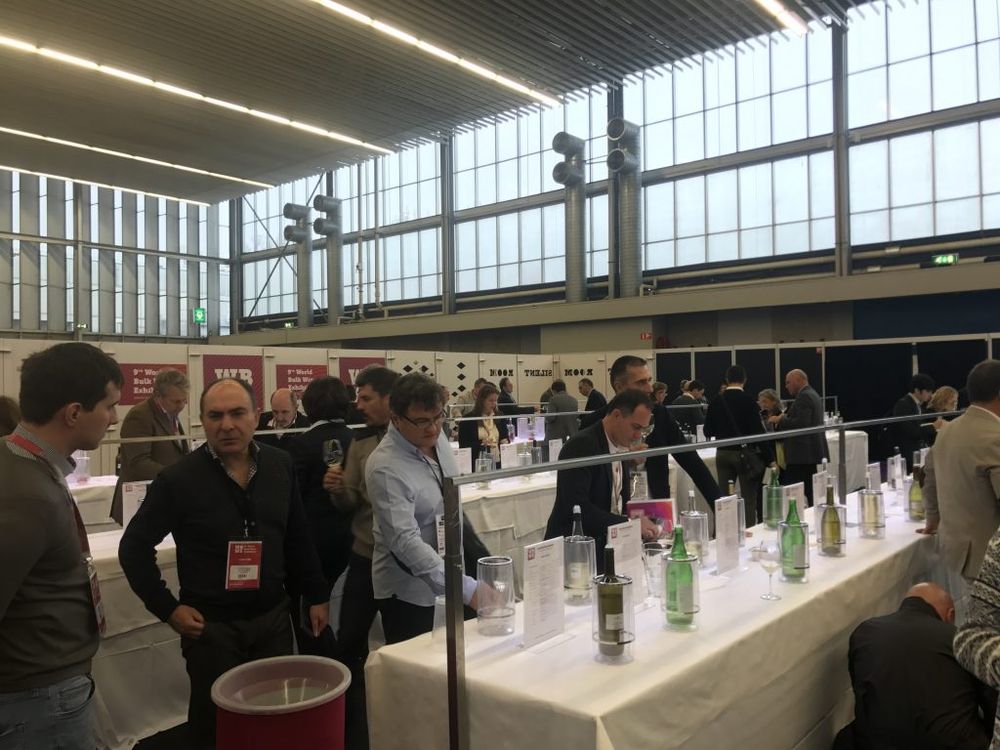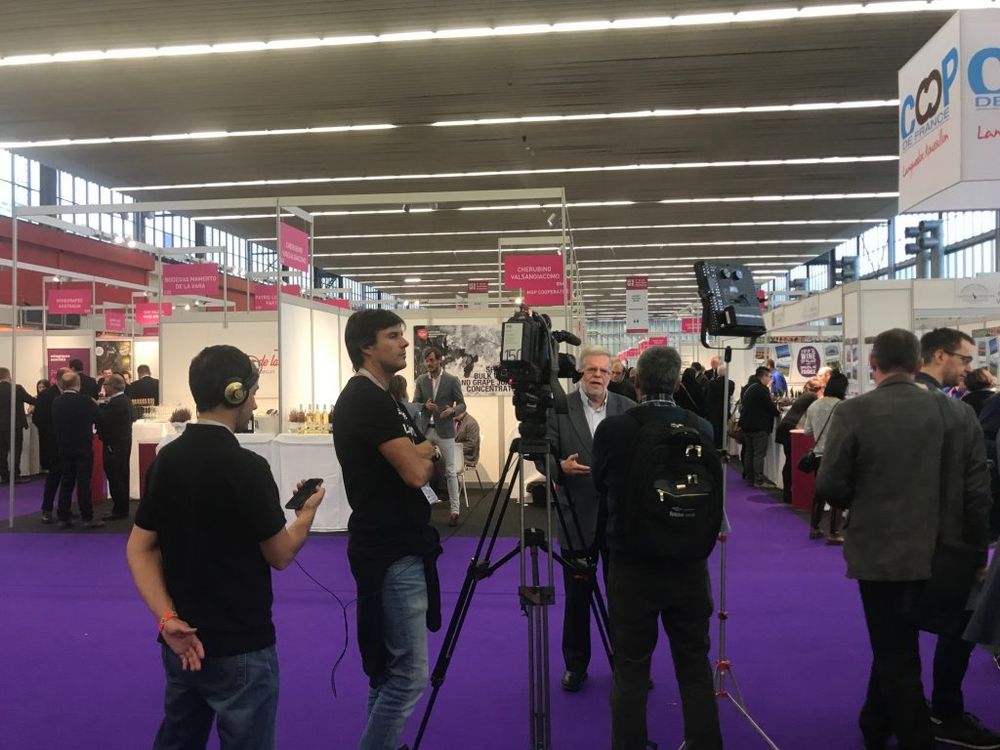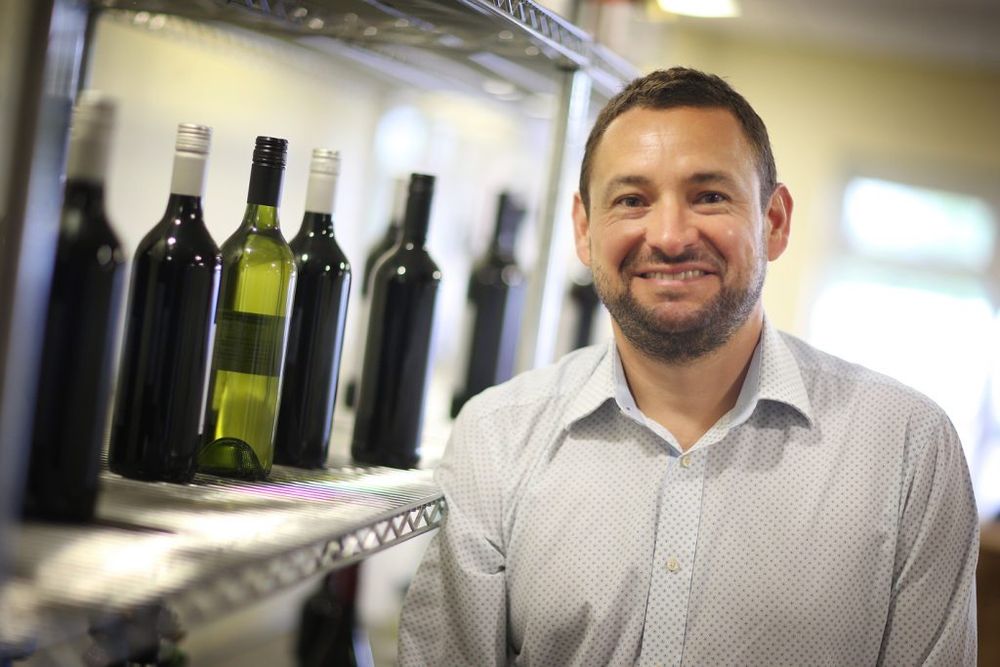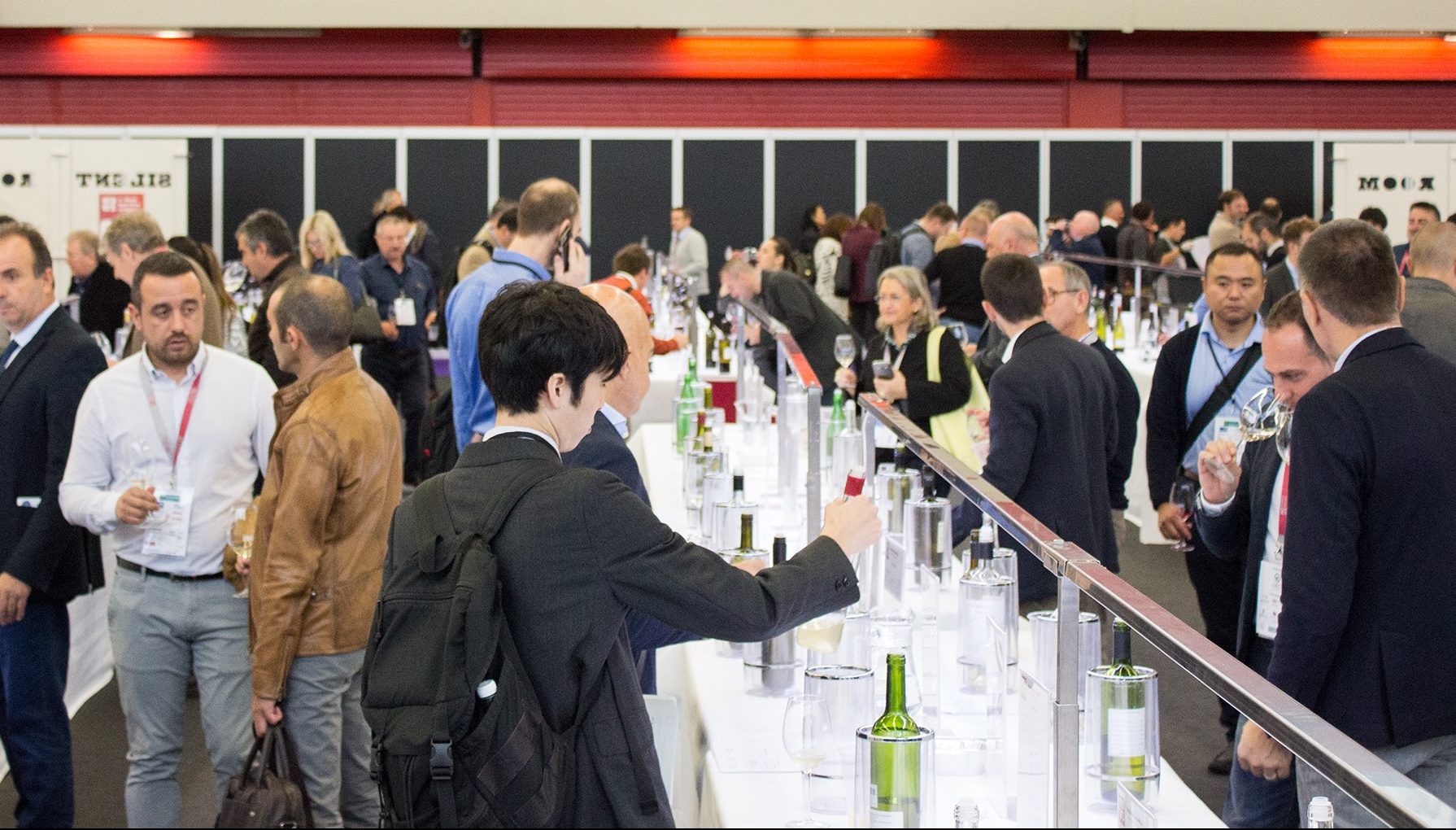If you have not already placed your orders and secured your wines from the 2017 wine harvest then it might already be too late if the word from the trading floor from last week’s World Bulk Wine Exhibition is to be believed.

Buyers had to fight over less wine at this year’s World Bulk Wine Exhibition
If you were not able to make it to Amsterdam this week for the ninth edition of the World Bulk Wine Exhibition then look away now. Particularly if you are in the business of buying and securing bulk wine. Things could be about to get a little ugly for you. Regardless of who you are.
With a global wine shortage of 8%, the biggest since 1991, this was not a show to miss out on. Particularly as up to 80% of the available bulk wine in the global market was said to be there and up for sale.
But as busy buyers rushed from stand to stand, looking to secure their own contracts and volumes of wine, the talk was also of those that had not made the trip and the pickle they might soon find themselves in tracking down necessary volumes of wine.
“If you were not here this year then you will get your fingers burnt,” is how one leading UK wine distributor put it.
The major retail players and big chains, for example, who chose to stay away, confident the market will eventually come to them with wine at the prices they want, could be in for a big shock.
Not only will they find themselves locked out of the market for direct business, the bottlers and distributors they work with will only have wine they were able to source at much higher price points than they currently might think they have to pay.
“It does not matter if your name is Sainsbury’s. It doesn’t not fly any more. If you’re not here. You’e not anywhere,” was how one broker saw the market.
“Don’t think you can stand back and wait and get offered a better price further down the line. Once the wine’s gone, it’s gone,” said another European importer. “It’s a sellers’ market.”
Producers in charge

Lights, camera, action at WBWE
It was clear from WBWE 2017 that producers, from both the Northern and Southern hemispheres, could be far more selective about whom they looked to sell their wine to.
A fair where prices were being set by producers and buyers were having to get in line to pay them or run the risk of losing out to buyers with bigger pockets elsewhere in the world. Particularly China and across Asia.
Time and again both buyers and producers said this was a year when real working relationships, built up over many years, would really bare fruit. The bulk wine sector is as much a community as it is an industry and whilst the volumes involved might be massive, the number of players involved is still reasonably small. So this was a year when you found out who your real friends are, and how strong those working relationships are in practice.
“Relationships count more in this part of the wine industry than in any other,” said one bulk wine broker. “You needed to be here to show faith and support to companies that you have long term relationships with. People have got wine to sell, but they are not selling it to customers unless they know have got a long term partnership with,” is how another distributor explained the situation.
Turning up out of the blue and expecting to get the same deal and prices as buyers who have been working with producers and brokers for years was simply not going to work.
Salvatore Vitale, commercial director of Sicilian producer Cantina La Vite, said its quarter drop in production meant it had been able to sell 80% of its bulk wine before the end of October, when normally it would be in that position going in to the new year. “So for us this year’s show is more about building our relationships and our connections for future years,” he said.
Planning ahead

Barney Davis said the WBWE was a time to look further into 2018 and secure in contracts now from the Southern Hemisphere
Barney Davis, head of commercial operations at UK importer, brand and agency business Lanchester Wines, said it was more about having meetings looking to secure stocks from next vintage than it was looking at just buying wine for now. “We don’t buy on the spot market. We want and need consistency of supply and therefore value the long term supply arrangements we have in place,” he said.
There was quite understandably a big interest in the New World producers at the show, be it from across South America, particularly Chile, South Africa, Australia and New Zealand. Not only did the New World enjoy a much healthier and positive 2017, this was a time to look at potential contracts for the forthcoming 2018 harvests and the first chance for buyers to potentially make up for the huge 2017 European shortages.
Davis said “there was a lot of focus on what Chile is looking like in 2018”. After two smaller than normal vintages, pricing looks set to rise again due to increased demand created by short harvests in Europe. One thing’s for sure the prices are going up “dramatically” which is a message we are obviously communicating to our major customers, he added.
“I am looking here to put in place contracts with producers where I can say I will require X amount of volume, so that we can agree that and lock it in. We can then look at price further down the line,” he explained.
But equally he was aware of some buyers and producers deciding prices now ahead of the 2018 harvest, “which is unusual”.
That was very much the case, confirmed Jaime Lagos Vergara of Chilean and Argentine producer, San Nicolas Wines. “Some people are trying to secure price and stock levels now,” he said. The shortage of wines in Europe meant he had seen far more interest than normal from buyers in Russia, China and central Africa. “They are all here this year talking to us for the first time.”
Increase in prices
The overriding theme of this year’s fair was of higher quality wines that quite rightly are demanding higher price points. This was not the show to be if you were expecting to find cut price deals on entry level wines for less than €0.50 cents a litre. But if you wanted to find a quality Primitivo for €10 ex-cellars then first time exhibitor Cantina Diomede was there to sell it to you.
Noticeably wine quality was the first consideration of buyers over price. There was a general understanding that the global shortage in wine meant prices were going up across the board.

Frederic Alcouffe of Vinadeis in the Languedoc said there was a big change this year in buyers’ being happy to talk quality over price
Frederic Alcouffe, of Vinadeis in the Languedoc said it has had to put up its prices by between 5% and 20% as it lost a quarter of its production. “But we have seen more buyers this year all looking for a solution. People are quite happy to just ask to taste. To judge the wines on quality. It’s more important this year than price which is unusual,” said Alcouffe.
Cantina La Vite in Sicily confirmed its €0.50 bulk wines were now 90c, its Nero D’Avalo wines had gone to €1.50 from €0.90. “It’s been crazy this year. We have to sell less wine to our existing customers. If they normally take 2,000 h/l from us, we have had to only give them 1,700 h/l,” said Vitale. “But we have to take care of our traditional customers first.”
Looking East
The show also threw open new opportunities for emerging countries to shine. Moldova, for example, was the biggest country exhibiting at WBWE with 12 different producers represented. Each had good quantities of quality, higher priced bulk wine to buy from the 2017 vintage.
Ion Loghin, production director of leading Moldovan wine producer, the Dragon Group, made up of seven wineries, said the WBWE was an opportunity for the country to really showcase what it can do. How it can now demonstrate how the styles of its wines have changed to offer a real alternative for most international grape varieties. “Moldova is focused on producing higher priced, quality wines. We have invested over the last 10 years in the most modern machinery and equipment.”
Which is particularly showing in the quality and consistency of its fresh, fruity and refreshing styles of white wine in particular.
Prepare for 2018

Dan Murphy, founder of bulk wine brokers, Murphy Wine Company, said he thought the real impact of the 2017 global wine shortage would be felt at next year’s show. There was still enough volume in the market to satisfy the vast majority of customers this year, but he questioned Europe’s ability to keep up with global demand, on the back of such a small harvest, and that we are all in for a much bigger squeeze in 12 months time. It also threw in to question the decision by so many European producers to rip up vines over recent years.
For many producers 2017 was an unprecedented year of actually having to say “no” to buyers and potential new customers. Christian Gilbert, sales and marketing manager for Europe for Wellington Wines in South Africa said he was having to “turn down business left, right and centre” as it simply did not have the wine available to sell. The winery, for example, only has 100,000 litres left of 22m litres supply of Chenin Blanc.
Overall the mood in Amsterdam was serious, but considering the much discussed shortage in global wine volumes, it was also surprisingly upbeat and positive. Yes, the pressure was on to find the right volumes of wine, but if you knew what you were doing, knew who to talk to and, vitally, had well established relationships in place with key producers, then you will have been heading home quietly satisfied of a job well done.
That said many buyers and distributors will also be rehearsing what to say to their customers now they have returned with order books full of wine, but at price points potentially much higher than they might have previously anticipated.
- This article is adapted from one that was first published on VINEX, the bulk wine trading platform.









































